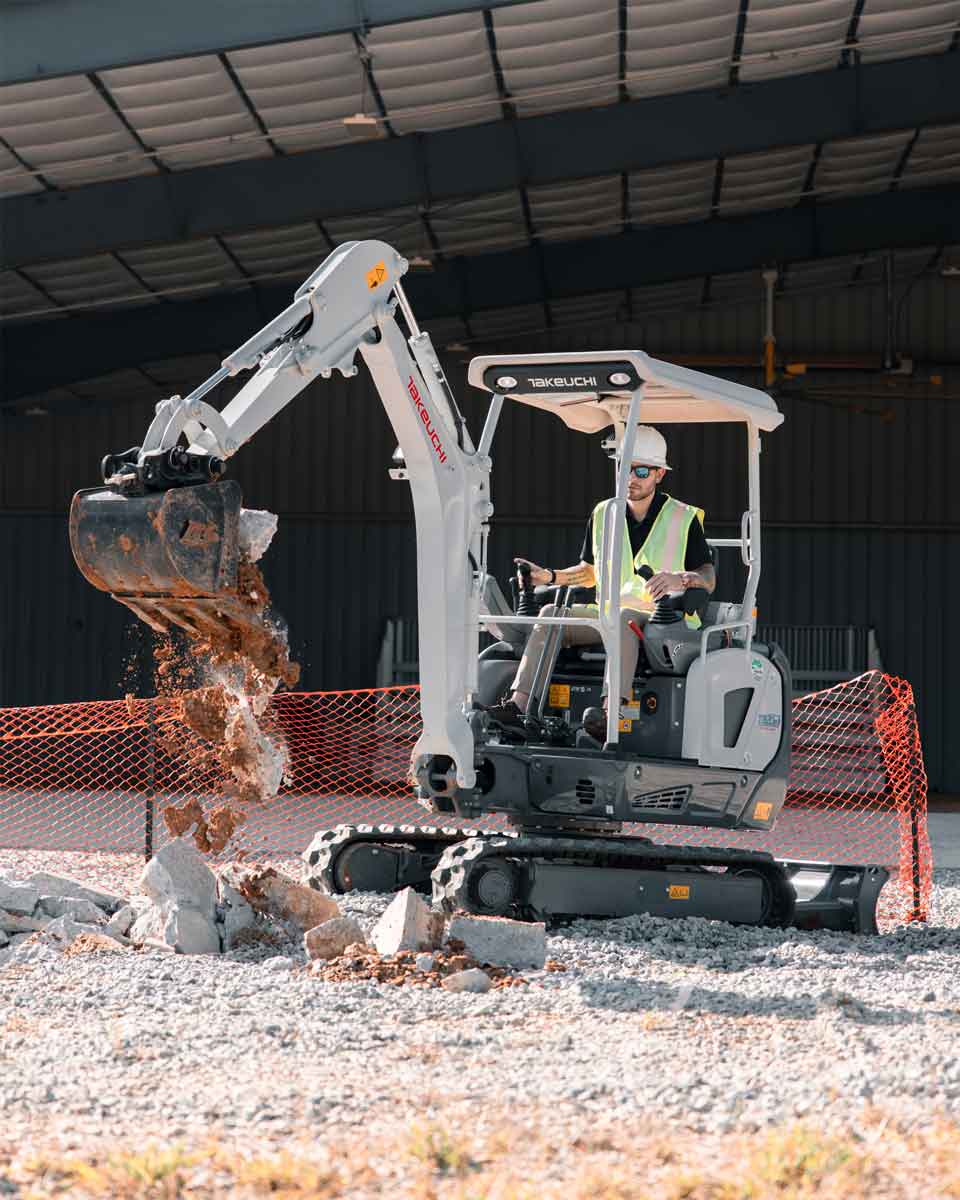Volvo Compact Excavators — 2014 Spec Guide
Volvo currently has seven models of compact excavators and nomenclature denotes the approximate operating weight in metric tons — EC20C has an operating weight of 2 tons. Volvo compact excavators range from 2 to 9.3 tons. Volvo offers three models of conventional radius machines — the EC20C, EC35C and EC55C. Volvo offers four models of zero tail swing machines — the ECR25D, ECR38, ECR58D and ECR88D.
Volvo’s X-frame undercarriage on compact excavators is similar to that of its general purpose and production equipment. With one of the thickest tracks and drive sprockets in the industry, says Volvo, this ensures long life and provides protection from harsh conditions. Another feature is the automatic kick-down in the drive system that automatically shifts to low range when making a turn or climbing a grade. Dozer blades are standard on all Volvo compact excavator models as well.
The company has one of the largest cabs in the compact excavator industry, says Volvo. The company also notes that safety and maintenance innovations in Volvo compact excavators abound. Cab and canopy units have ROPS/FOPS/TOPS safety-certified structures. The canopy version is the most common on the compact excavator. However if you want to increase the time you can use the machine, cab heat and A/C would be a good feature to have. An operator is normally more efficient in a cab machine, and the cab protects the machine and can increase resale value.
Back to safety, the machine’s hydraulic and drive functions are disabled by raising the left control console when entering or leaving the cab to prevent accidental movement. Filters, fills and service points are all easily accessed from ground level. Retractable safety belts and reverse alarms are standard on all models, which continually reinforces one Volvo core value — safety.
Volvo also can supply a wide range of attachments that are properly sized for the machine and application. For use of hydraulic attachments such as augers and breakers, all machines can be fitted with auxiliary hydraulic circuits. Many mini excavator applications require special hydraulically-driven attachments like augers and hammers. Volvo offers single-acting hydraulics (hammer) and double-acting hydraulics (auger).
Advice to Buyers
“It’s important to look at your needs for an excavator today, while keeping in mind your plan for what you could be doing in the near future,” says John Comrie, utility product manager of Volvo Construction Equipment. “Maybe you need a larger excavator or maybe a smaller excavator would do your work. What main work will you do with the excavator? Consider conventional tail swing heavy lifting vs. short radius confined areas. Will your excavator be used mostly for bucket work? Would an attachment carrier be useful — hydraulic or mechanical? How deep will you be trenching? Are you using attachments that require single or double acting hydraulics?
“The type of ground surface you will be working on will determine what type of track system to use. Conventional one-piece rubber tracks can be used in most applications, but can have a short life. Steel tracks are mostly used if your work is onsite and are not recommended for concrete or asphalt surfaces. Steel tracks generally have a long life. An alternative to these two options would be single bolt-on pads or tuff pads. They have longer life than single rubber, work in most applications, and are more aggressive that single rubber, but they’re still a good choice on asphalt and concrete surfaces.”





